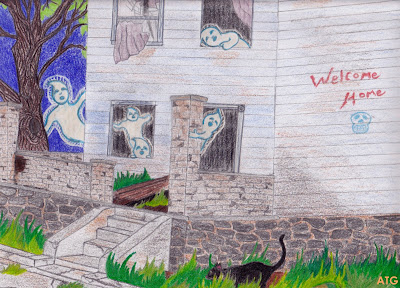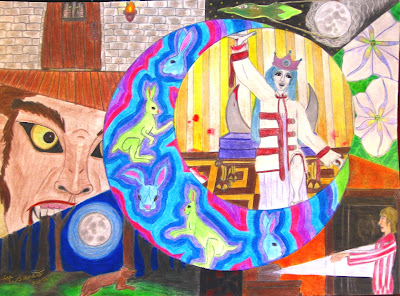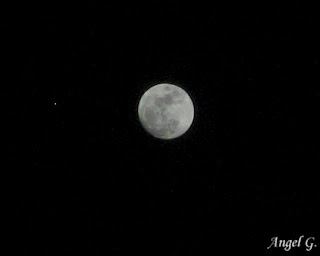Sometimes, I search for inspiration to begin a new piece of art, but other times and perhaps more often, that inspiration finds me. Over the past few years, I have become very interested in my family’s genealogy. At the moment, it’s more of a hobby, though it occasionally threatens to turn into an obsession.
My Italian ancestors initially settled in Pittsburgh, Pennsylvania in a neighborhood called East Liberty. As I’ve paged through digital census records, squinting at an astounding variety of cursive handwriting and making note of the changes in my family over the decades, I’ve also had to pay close attention to their changes of address. Some of my family chose to live in the same house for years and years and can be reliably found like old friends at the same place in every census count and city directory. Others, frustratingly, moved often and occasionally disappeared altogether in public records.
Through all of this research, I’ve found it valuable to familiarize myself with East Liberty, both then and now (there are some terrific maps of Historic Pittsburgh online), and thanks to Google’s Street View, I’ve been able to “walk” around my ancestors’ old neighborhood without ever having to endure going through airport security.
My virtual tours have been sadder than anything else, though. I suppose I am used to revitalized and thriving “Old Town” neighborhoods full of unique and fun little shops, hip restaurants, small theatres, clubs, and student housing. As a place where poor immigrants once flocked, I don’t know if East Liberty was ever a wonderful place to live, but it certainly isn’t now. Many of the places my ancestors used to live are empty, overgrown lots, flanked on both sides by boarded-up, decrepit buildings. Weeds overtake the sidewalks, and I have the general impression that in the next decade or so, the plant life will reclaim the remaining houses as well. Places that my great-grandparents called their homes for decades are just wasting away.
The house that struck me the most, the one the picture for this post was based on, I discovered while looking at a potential ancestor’s old address. The address turned out to be an empty lot that wanted to be a small forest. When I turned around, though, I was confronted by the shell of a house. The roof, windows, and doors were gone, but it still stood. I couldn’t help but think of all the things that house had seen, the memories embedded within it, and it just sat there, rotting away. I suppose it will be an empty lot one day, too.
There are still some nice houses in East Liberty, obviously maintained by loving owners, and the invading greenery is actually quite pretty. I don’t know if anyone will save what’s left. I would hope that something of it continues to live on. This place was once crammed with life, but now all I see is ghosts.
One of my favorite ways to set up a new piece of art is to divide it into panels, as in the one seen here. The panels can tell part of a story or be organized around a theme. Some themes are more successful than others. For “Moonstruck,” the topic is quite obviously the moon and some of my favorite associations with it.
The left half of the piece tells a very short story about a very special lunatic: the werewolf. We begin with him locked up in a cell in a deep, dark dungeon. As the full moon rises, his transformation takes place, and he’s able to escape. Finally, we see him free in the woods under the light of his beloved moon. In popular culture, werewolves tend to be unhappy creatures: cursed with a condition dangerous to others that they cannot control. Iconic werewolves like Larry Talbot from The Wolfman and David Kessler from An American Werewolf in London live short and terrible lives, and even in modern paranormal fiction, they often lose out to brooding bloodsuckers in odd, little love triangles. I’d like to think they experience moments of joy, too, though.
The crescent-shaped panel is full of hares. In Chinese, Mexican, and other mythologies, it is believed that the arrangement of darker spots on the moon resemble a seated hare. How the hare got up there is the subject of much speculation, and the stories from each culture vary. As far as color choice goes, I chose a sort of psychedelic Easter scheme to brighten up the piece.
Inside the crescent, a beautiful queen is imprisoned. In many cultures, the moon is regarded as female and the sun as male. From the earth’s perspective, the sun is the king of the stars, so I make the moon our queen. In my mind, though, she is trapped and was long ago driven mad by the isolation, thus her love for more terrestrial lunatics. Her captors have not been kind, either. Her throne is essentially a torture device, and her wallpaper is a tribute to Charlotte Perkins Gilman’s short story “The Yellow Wallpaper,” in which a woman’s husband seeks to drive her mad. If you haven’t read it, I highly recommend it. (P.S. Like our werewolf, the queen’s free now, so keep a watchful eye.)
In the top right panel, you may notice someone in a spaceship stealing our moon. This was, of course, Gru’s great ambition in Despicable Me, but as much I like that movie, I prefer the image of the moon being towed rather than shrunk and stuck in a coffee cup. Compared to other moons in the solar system, perhaps ours is a little homely, but I wouldn’t mind having it all to myself.
Below the moon-robbers are a pair of moonflowers. Notable for being quite lovely and for the fact that a teacher once gave me a moonflower seed that I have since lost. It’s probably just as well; I can only keep cacti and succulents alive.
Finally, in the bottom right-hand corner is a small homage to The Moonstone by Wilkie Collins. I don’t pretend that it is a historically or even literally-accurate depiction of the scene in the book, but I think it’s worth including in my tribute to the moon. The book is considered one of the first detective novels, and I don’t want to give away the plot by explaining too much, so I’ll merely say that it is worth a read if you like mysteries or 19th century literature.
I do find our moon to be quite a captivating object. Whether full or just a sliver, it is beautiful. I’ve spent a lot of time trying to capture a perfect photograph of it, or as good as I can get with an older 4-mega pixel camera. Clearly, as there are so many myths and literary love letters to it, I’m not the only one who loves our moon.
To close, here are some lyrics and good advice from the song “Get Out and Get Under the Moon:”
When you’re all alone, any old night,
And you’re feeling mighty blue,
Pick up your hat, close up your flat,
Get out, get under the moon!
Underneath the bright, silvery light,
You’ll be feeling better soon,
Pick up your hat, close up your flat,
Get out, get under the moon!
Music by Larry Shay, Lyrics by Charles Tobias and William Jerome (1928)
Thanks to lyricsmania.com and wikipedia


